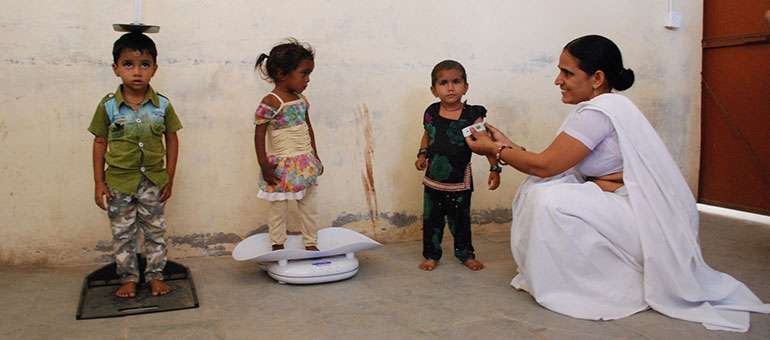The consistent evidence that childhood stunting is associated with poor child development and school performance (Perkins et al. 2017) and health and human capital development more generally (Victora et al 2008) has elevated nutrition in the development agenda. The result has been an unprecedented focus on addressing stunting and some renewed development resources focused on doing so.
But the focus on stunting may be a double-edged sword for the nutrition and development communities if we are not careful with the use and interpretation of this measure. The recent commentary in the Journal of Nutrition by Pirumal and colleagues provides an excellent overview of the potential risks and pitfalls of using stunting in an unthinking way.
The paper highlights the origin of the indicator (height for age below a designated cut-off, usually 2 standard deviations below the reference mean, i.e., Z-score of <-2, referred to as HAZ) as a population level marker of sub-optimal human capital development, poverty and deprivation. For this reason, the prevalence of stunting can be a powerful and appropriate tool for advocacy for greater action to reduce undernutrition.
The paper also reminds us that at an individual level there is nothing inherently wrong with being short unless one is short because of growth faltering (i.e., failing to reach genetic potential due to deprivations in food consumption, care and the health environment). It also surfaces the key limitation of stunting as a summary indicator of lost human capital, namely that it ignores any growth faltering that occurs elsewhere along the height for age distribution, not just below a -2 HAZ. This leads to several potential misuses and misinterpretations of stunting.
Specifically:
- Stunting prevalence understates the magnitude of the problem of growth faltering at the population level. Many of those even with HAZ >-2 may have experienced growth faltering and we are missing these children in all of our counts of the magnitude of the problem.
- An HAZ of <-2 is not a threshold marker of malnutrition or disease for any single individual child. The associations between growth faltering and adverse outcomes exist regardless of the magnitude of that growth faltering and there is no documented strengthening of the relationship between growth faltering and adverse outcomes at the threshold of -2 HAZ.
- While several direct causes of growth faltering have been identified, poverty, deprivation and inequality lie at its core and it is unrealistic for program designers and investors to expect individual, household and community level interventions that focus on only one or even several of the more direct causes to have much of an impact on stunting, particularly over short project cycles.

In India, as part of GAIN's POSHAN project, each kid has to be measured and weighted. © GAIN
So what to use to assess changes in child nutrition over time? In addition to stunting we should be looking at mean and standard deviation of HAZ and at the slope of change in HAZ by age (we want it to be close to zero). In other words, in countries with evidence of growth faltering, we want to see rightward shifts of the entire HAZ distribution because this will reflect positive improvement in growth of all children.
At GAIN we and our partners strive to improve the consumption of nutritious safe food for all, especially the most vulnerable and we want our programmatic efforts to contribute to improving child growth. We recognise however, that the indicators we can change in the shorter term as a direct result of our programs are more likely to relate to the nutritional quality of diets.
Program investors need to recognise that the prevention of growth faltering requires many factors to move simultaneously in the right direction over a significant time period. Several countries have made substantial progress in doing so, typically based on a solid foundation of progress in development indicators such as GDP, inequality and women’s status. But designing and scaling nutrition programs that effectively address key drivers of stunting, such as GAIN’s focus on diet quality, is also vital. The right program indicators are those that are achievable within a program context but have a clear path to progress towards ultimate outcomes, like improved growth. Getting this balance right should lay the ground for sounder and more transformative nutrition investments.